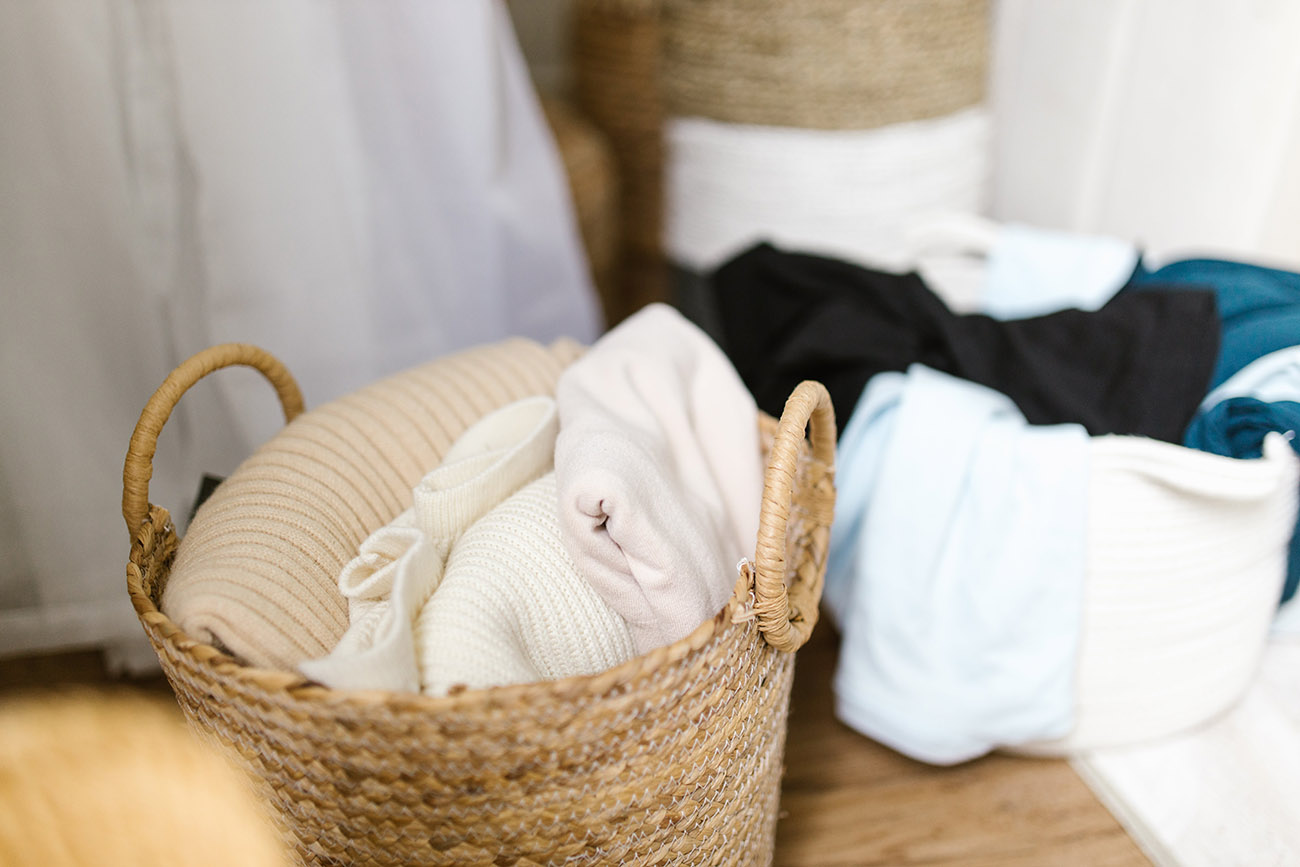A dryer has become an essential household appliance, as it helps us save time spent hanging and air-drying laundry. Thanks to its features, we can even reduce the amount of clothing that needs ironing, which is a chore many try to steer clear of or simply don't have time for. Using a dryer is a breeze, but there are still a few guidelines to follow to ensure we end up with clean, fresh-smelling laundry.
In this article, we bring you handy tips for making the most of your dryer.

Drying Prep
Getting ready for drying starts even before the clothes hit the drum. Choose a spin cycle that wrings out as much moisture as possible.
Always check the label on your clothing, where you'll find whether it can be hung or take the heat of the dryer.
Before tossing your laundry into a dryer, sort your garments by fabric type and thickness to ensure they all come out dry at the end of the cycle. Give your clothes a good shake and separate them to prevent wrinkles, as crumpled clothes don't dry well.
When selecting the program, consider whether you'll be ironing the clothes after drying: in that case, leave them slightly damp. Be cautious when loading a dryer drum and only fill it halfway. Check for any stains on your clothes, as they'd be much harder to remove after drying.
After each spin in a dryer, don't forget to empty a condensation tank. If you can't manage it every time or just keep forgetting, don't push it past three or four runs. Plus, you can put that tank water to good use—watering plants, filling up your car's windshield washer, or even topping off the iron.
After drying, don't forget to give your filter a thorough cleaning, clearing out dust and mites. You can vacuum it clean or disinfect by soaking it in a solution of cold water and white vinegar, equal parts. Before popping it back into a dryer, make sure it's bone dry.
Likewise, you should give your drum a good scrub with this solution, at least once every three months. This not only prevents any funky smells from building up in the dryer but also leaves your clothes smelling fresh as a daisy.
What Doesn't Belong in Any Dryer
Even though you can toss almost anything in a dryer, here are a few clothes and items that aren't cut out for this appliance.
- Clothing with sequins and sparkles. While you can toss these outfits into a wash, steer clear of a dryer—those embellishments might get damaged in a tumble.
- Woollen clothing. Wool is highly sensitive to high temperatures, and drying it in a dryer could cause it to shrink by several sizes.
- Silk garments. Silk is an extremely delicate material that can't stand high temperatures. That's why you should steer clear of drying it in a dryer altogether—it could lose its delicate touch.
- Lace lingerie and bras. During drying, hooks, elastic parts, and lace could get damaged.
- Puffer jackets. The delicate goose feathers would be ruined in a dryer. It's better to let them air dry freely.
- Fleece clothing. Fleece is a synthetic fabric and can easily shrink at high temperatures, which could lead to irreversible damage during drying.
- Swimwear. The elastic parts of swimwear could get damaged, so it's best to avoid putting them in the dryer.
- Pantyhose. Drying them in the dryer could create runs, making them unwearable.
- Bath mats. While the fabric of the mat itself is durable, drying it in the dryer could damage the rubber backing, as high heat may cause it to deform.
- Functional and waterproof clothing. Due to the manufacturing methods and processes, these garments could be damaged by heat.
- Garments with iron-on and rubberized images. The images could peel off or crack due to heat exposure.
- Footwear featuring glued soles. The adhesive on certain sneakers or shoes could melt in the dryer due to high temperatures.
- Laundry washed with fabric softener. Fabric softener could potentially clog the dryer. If you still choose to use it, we recommend cleaning the dryer filter regularly.
- Clothing with plastic zippers. Plastic zippers could potentially warp in the dryer's heat.
- Clothing soaked in flammable substances. Exercise extreme caution if garments are stained with hair spray or if you spill gasoline or diesel while repairing a car. Drying such clothing in a dryer can be extremely dangerous in this case.

Tricks for Better Drying Quality
If you crave beautifully fragrant laundry without clogging up your dryer with fabric softener, try using laundry perfume. Unlike ordinary softeners, laundry perfumes won't gunk up your washer or dryer, preserving your clothes' functionality. Plus, they're packed with fragrance oils, ensuring your laundry stays intensely and long-lastingly fresh. Choose from six favourite scents by Puella.
To make your laundry softer and rid it of static electricity, you can use dryer balls. You can find them in various sizes and designs at drugstores. They work to soften laundry without adding chemicals by moving around and gently shaking the laundry during drying. This also prevents the formation of wrinkles and lint.
The secret to drying bed linen is to put only a few pieces in a drum at a time. This prevents pulling out a wrinkled, damp heap from a dryer. If you want to dry other clothes along with your bed linen, we recommend putting the bed linen in a dryer first in line.
Choose the right drying program for each type of clothing. Information on which program to select can be found on the garment label. For a dryer, look for the square symbol with a circle inside. A crossed-out square with a circle means the clothing should not be dried in any dryer. If the square is not crossed out, you can put the fabrics in a dryer. The drying temperature is indicated by the number of dots inside the circle:
- The square with a circle and one dot inside indicates that the fabric can be dried at a low temperature (up to 60 °C).
- Two dots in the circle mean drying at a medium temperature (60 - 80 °C).
- Three dots indicate the need for drying at a high temperature (above 80 °C).
Don't leave clothes in a dryer long after a drying cycle ends. Clothes are hot right after a program finishes, which is the right time to remove them. Leaving them in a dryer for too long can cause wrinkles and creases. Additionally, it may lead to an unwanted odour.
Do not open a dryer door during the drying cycle. Doing so unnecessarily prolongs a drying time by allowing hot air to escape and reheating a drum. If possible, place your dryer in a warm room. Unheated spaces extend drying time.
We've offered you several tips on achieving clean and fresh-smelling laundry using a dryer. It's up to you which of these tips you'll be inspired by.
